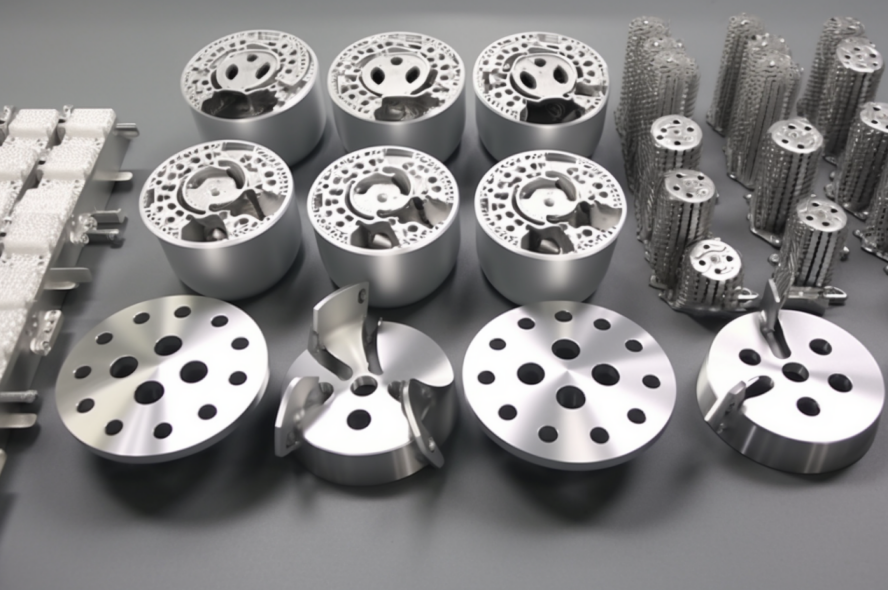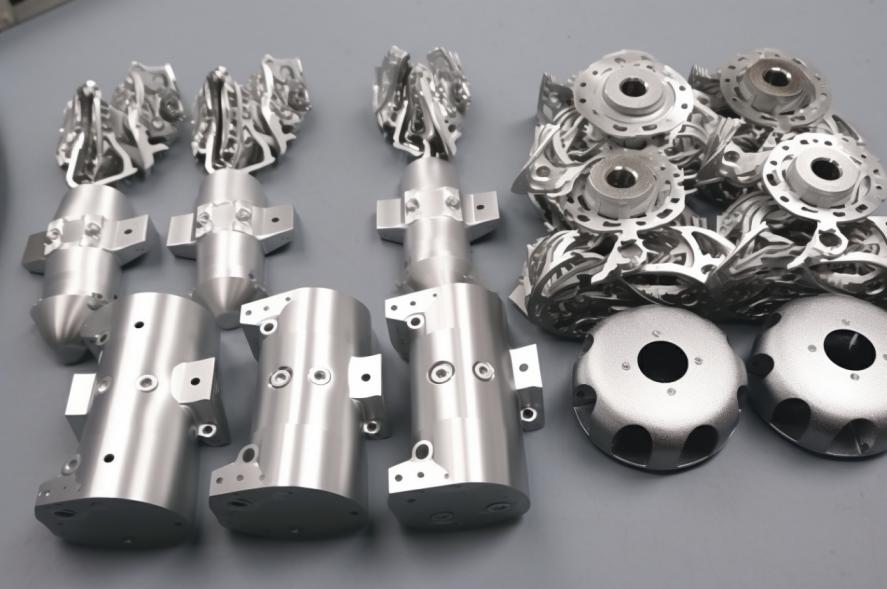Blog
We regularly update articles related to the prototyping and manufacturing industry. You’re welcome to check our previous blogs and subscribe to our newsletter.
Best 3D Metal Printing Prototyping : A Comprehensive Guide
3D metal printing, also known as additive manufacturing, is revolutionizing prototyping across various industries. This guide delves into the key aspects of 3D metal printing technologies, material selection, and design considerations to help makers navigate this advanced manufacturing landscape. We will explore the benefits of each technology, the importance of material choice, and crucial design strategies to optimize your prototypes. Let’s dive into the details, with insights from Louis Machine, a leading 3D metal printing prototyping service supplier.
Understanding 3D Metal Printing Technologies
1.1 Overview
3D metal printing technologies are transforming the way prototypes are created, offering precision, speed, and flexibility. The primary methods in this field are Selective Laser Melting (SLM), Direct Metal Laser Sintering (DMLS), and Electron Beam Melting (EBM). Each method caters to specific applications and materials, making it crucial to understand their differences.
1.2 Maker Needs
Choosing the right technology depends on several factors, including the type of metal being used, the required precision, and budget constraints. Understanding these needs helps in selecting the most suitable technology for your prototyping requirements.
1.3 Solutions
a. SLM/DMLS
SLM and DMLS are ideal for producing high-precision parts and are compatible with a wide range of metal alloys. These methods are particularly suitable for aerospace and medical applications where precision is critical. They utilize a laser to melt and fuse metallic powders, layer by layer, to create intricate and accurate prototypes.
b. EBM
EBM is best suited for larger parts and applications where slight deviations are acceptable, such as in the automotive industry. This technology uses an electron beam to melt the metal powder, which is particularly effective for materials that are prone to residual stress. EBM is also advantageous for its speed and efficiency in producing bulkier components.
Material Selection for Prototyping
2.1 Overview
The choice of material in 3D metal printing significantly impacts the prototype’s properties, including strength, durability, and thermal resistance. Selecting the right material ensures that the prototype meets the specific requirements of its intended application.
2.2 Maker Needs
Understanding the properties of different metals is essential for selecting the right material for your prototype. Factors such as mechanical properties, corrosion resistance, weight, and thermal characteristics play a crucial role in this decision-making process.
2.3 Solutions
a. Stainless Steel
Stainless steel offers excellent mechanical properties and corrosion resistance, making it suitable for functional prototypes and end-use parts. It is widely used in applications that require durability and resistance to harsh environments.
b. Titanium
Titanium is known for its high strength-to-weight ratio and excellent biocompatibility, making it ideal for aerospace components and medical implants. Its lightweight nature and resistance to extreme temperatures also make it a popular choice in high-performance industries.
c. Aluminum
Aluminum is lightweight and has good thermal properties, making it a great choice for automotive and electronic enclosures. Its ease of machining and affordability also make it a preferred material for rapid prototyping and mass production.
Design Considerations for Metal Printing
3.1 Overview
Designing for 3D metal printing requires different considerations compared to traditional manufacturing methods. Factors such as support structures, part orientation, and post-processing need to be planned from the outset to optimize the final prototype.

3.2 Maker Needs
Creating designs that leverage the strengths of 3D metal printing while minimizing potential issues like warping and support removal is essential. Effective design strategies can significantly improve the quality and efficiency of the prototyping process.
3.3 Solutions
a. Topology Optimization
Using software tools for topology optimization can help create designs that reduce weight and material usage while maintaining structural integrity. This approach is particularly useful in industries where minimizing weight is critical, such as aerospace and automotive.
b. Support Structures
Designing removable support structures that stabilize the part during printing and are easy to remove post-printing is crucial. Proper support design can prevent warping and deformation, ensuring the accuracy and quality of the final prototype.
c. Part Orientation
Orienting parts to minimize the need for support and optimize the surface finish is a key design consideration. Proper orientation can reduce post-processing time and improve the mechanical properties of the printed parts.
Prototyping Speed and Efficiency
4.1 Overview
One of the significant advantages of 3D metal printing is the ability to quickly produce prototypes, facilitating rapid iteration and testing. This speed is crucial for makers looking to shorten development cycles and bring products to market faster.
4.2 Maker Needs
Reducing the time from design to functional prototype without compromising quality is essential. Efficient prototyping enables faster design validation, adjustments, and final product development.
4.3 Solutions
a. Concurrent Design and Manufacturing
Using software that integrates design and manufacturing processes can streamline the workflow. This approach allows for simultaneous development and production, significantly reducing the time needed to create functional prototypes. By identifying potential issues early in the design phase, makers can make adjustments quickly, ensuring a smoother transition from concept to prototype.
b. Batch Printing
Batch printing involves printing multiple prototypes in a single run to maximize printer usage and reduce turnaround time. This method is particularly effective for iterative testing, where multiple design versions are tested simultaneously. Batch printing not only speeds up the prototyping process but also makes it more cost-effective by fully utilizing the printing equipment.
c. Iterative Testing
Iterative testing involves quickly producing and testing multiple iterations to refine designs faster than traditional methods. By continuously improving and testing prototypes, makers can identify and resolve design flaws promptly. This iterative approach is integral to agile development practices, ensuring that the final product meets all functional and performance requirements.
Cost Management in 3D Metal Printing
5.1 Overview
While 3D metal printing can be cost-effective, managing expenses is crucial, especially for small-scale makers and startups. Balancing the cost of materials, machine time, and post-processing with the benefits of high-quality prototypes is essential for sustainable operations.
5.2 Maker Needs
Effective cost management strategies are necessary to ensure that the benefits of 3D metal printing are fully realized without overshooting budgets. This includes optimizing material use, leveraging shared resources, and minimizing post-processing costs.
5.3 Solutions
a. Material Efficiency
Designing parts to use the minimum amount of material necessary without sacrificing functionality can significantly reduce costs. Utilizing design optimization techniques, such as lattice structures and topology optimization, can help achieve this. These techniques not only save material costs but also improve the overall performance of the prototypes by reducing weight and enhancing structural integrity.
Partnering with local maker spaces or printing services to access high-end equipment without the upfront investment can be a cost-effective solution. These collaborations allow makers to use advanced 3D metal printing technologies and expertise without the need for significant capital expenditure. Shared resources also provide opportunities for networking and knowledge exchange within the maker community.
c. DIY Post-Processing
Performing simpler post-processing tasks in-house can save on outsourcing costs. While some post-processing steps, such as heat treatment and surface finishing, may require specialized equipment, many tasks can be handled internally. This approach not only reduces costs but also gives makers greater control over the final quality of their prototypes.
Future Trends and Innovations
6.1 Overview
The field of 3D metal printing is rapidly evolving, with new technologies and materials continually emerging. Staying informed about these advancements is crucial for makers to remain competitive and leverage cutting-edge techniques.

6.2 Maker Needs
Keeping up with the latest trends and innovations ensures that makers can take advantage of the most advanced methods and materials available. This knowledge can lead to improved prototype quality, reduced production times, and innovative design solutions.
6.3 Solutions
a. Hybrid Manufacturing
Combining 3D printing with traditional manufacturing methods to achieve the best of both worlds is a growing trend. Hybrid manufacturing allows for the creation of complex parts with the precision of additive manufacturing and the strength and finish of traditional methods. This approach is particularly beneficial for producing high-performance components in industries such as aerospace and automotive.
b. New Alloys
Keeping an eye on the development of new metal alloys that offer improved properties for specific applications is essential. Advances in material science are continually introducing alloys with enhanced strength, lightweight characteristics, and better thermal resistance. These new materials can open up possibilities for more robust and efficient prototypes.
c. Automation and AI
Utilizing automated design and manufacturing tools powered by AI can enhance precision and reduce errors. AI-driven software can optimize designs for manufacturability, predict potential issues, and suggest improvements. Automation in the manufacturing process can lead to more consistent quality, faster production times, and reduced labor costs.
Conclusion
3D metal printing is a game-changer for prototyping, offering unmatched precision and flexibility. By understanding the different technologies, selecting the right materials, and employing effective design strategies, makers can fully leverage this advanced manufacturing method to create high-quality prototypes. With insights from Louis Machine, a leading 3D metal printing prototyping service supplier, this guide provides a comprehensive overview to help you navigate the exciting world of 3D metal printing. Embrace the future of prototyping with 3D metal printing and transform your innovative ideas into reality with precision and efficiency.





